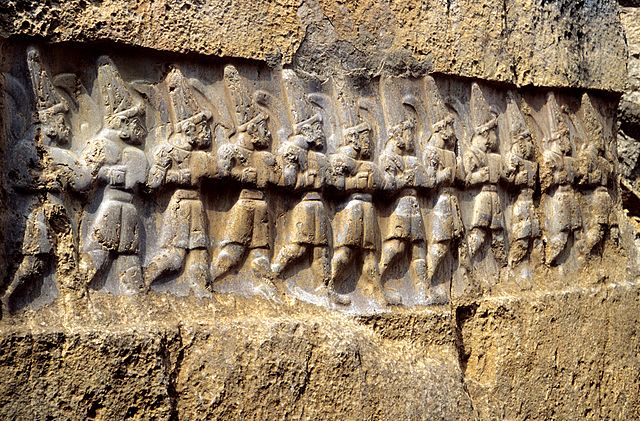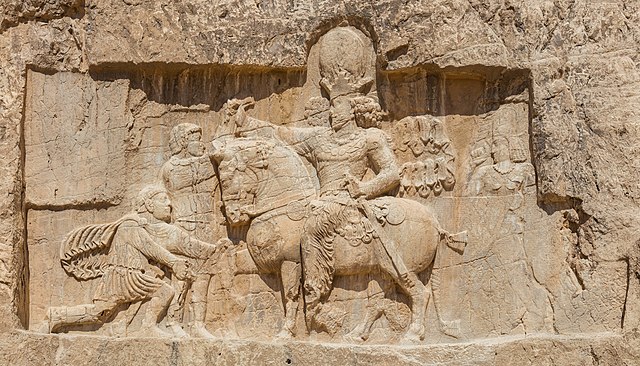A rock relief or rock-cut relief is a relief sculpture carved on solid or "living rock" such as a cliff, rather than a detached piece of stone. They are a category of rock art, and sometimes found as part of, or in conjunction with, rock-cut architecture. However, they tend to be omitted in most works on rock art, which concentrate on engravings and paintings by prehistoric peoples. A few such works exploit the natural contours of the rock and use them to define an image, but they do not amount to man-made reliefs. Rock reliefs have been made in many cultures throughout human history, and were especially important in the art of the ancient Near East. Rock reliefs are generally fairly large, as they need to be in order to have an impact in the open air. Most of those discussed here have figures that are over life-size, and in many the figures are multiples of life-size.
Reclining Buddha at Gal Vihara, Sri Lanka. The remains of the image house that originally enclosed it can be seen.
Naram-Sin of Akkad, reigned from c. 2254 BC, Qaradagh Mountain, Sulaymaniyah, Iraq
Hittite deities at Yazılıkaya
The triumph of Shapur I over the Roman Emperor Valerian, and Philip the Arab, Naqsh-e Rustam.
Relief is a sculptural method in which the sculpted pieces remain attached to a solid background of the same material. The term relief is from the Latin verb relevare, to raise. To create a sculpture in relief is to give the impression that the sculpted material has been raised above the background plane. When a relief is carved into a flat surface of stone or wood, the field is actually lowered, leaving the unsculpted areas seeming higher. The approach requires a lot of chiselling away of the background, which takes a long time. On the other hand, a relief saves forming the rear of a subject, and is less fragile and more securely fixed than a sculpture in the round, especially one of a standing figure where the ankles are a potential weak point, particularly in stone. In other materials such as metal, clay, plaster stucco, ceramics or papier-mâché the form can be simply added to or raised up from the background. Monumental bronze reliefs are made by casting.

Side view of Lorenzo Ghiberti's cast gilt-bronze Gates of Paradise at the Florence Baptistery in Florence, Italy, combining high-relief main figures with backgrounds mostly in low relief.
A common mixture of high and low relief, in the Roman Ara Pacis, placed to be seen from below. Low relief background
A low-relief dating to c. 2000 BC, from the kingdom of Simurrum, modern Iraq
"Blocked-out" unfinished low relief of Ahkenaten and Nefertiti; unfinished Greek and Persian high-reliefs show the same method of beginning a work.








